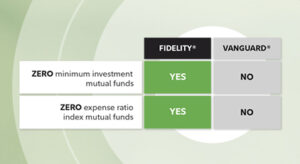Investing in the stock market can be an exciting and rewarding journey, especially when you get in early on promising companies. One of the most intriguing opportunities in the market for new investors is trading IPOs, or Initial Public Offerings. In this guide, we will explore what IPOs are, how to trade them, and how beginners can navigate this often volatile yet rewarding area of investing.
The Role of IPOs in the Stock Market
IPOs are important to both the company going public and the broader economy. For companies, going public allows them to raise funds by offering equity to the public. This influx of capital can fuel growth, acquisitions, or expansion into new markets. It also raises the company’s profile and credibility in the eyes of consumers and potential partners.
For investors, IPOs offer a unique opportunity to buy shares in a company at its early stages as a public entity. If the company performs well, the value of its stock can be appreciated significantly. The stock market, overall, benefits from IPOs as they bring new companies into the fold, enhancing the diversity and vibrancy of available investment options.
How to Prepare for Trading IPOs
Trading IPOs requires a thoughtful approach. Here’s how to start preparing for your IPO trading journey:
Researching the Company
Before deciding to invest in an IPO, it’s essential to thoroughly research the company. Understand the business model, industry, and competitive landscape. A strong company should have clear financials, a solid leadership team, and a clear path to profitability.
You can find detailed information about the company in its IPO prospectus, which is filed with the Securities and Exchange Commission (SEC) in the United States. The prospectus contains everything from financial reports to risk factors, helping you assess whether this company aligns with your investment goals.
Analyzing the IPO Prospectus
The IPO prospectus is an essential document that investors should study closely. It will outline the company’s financial performance, the number of shares being issued, how the raised funds will be used, and the risks associated with investing in the stock. As a beginner, it’s important to pay close attention to any “red flags” such as unproven profitability, overly optimistic projections, or excessive debt.
Assessing Market Conditions
IPO success is often influenced by broader market conditions. In times of economic growth, IPOs tend to perform better as there’s greater investor confidence. In contrast, market volatility or economic uncertainty can result in a more tepid reception for new IPOs. It’s crucial to evaluate market trends before deciding to invest in an IPO.
Deciding on an Investment Strategy
There are various strategies when it comes to trading IPOs. As a beginner, you’ll need to decide whether you want to take a long-term approach, investing in companies that you believe will grow significantly, or a short-term approach, capitalizing on the initial surge in stock price that often follows an IPO.
Steps to Trade IPOs
Once you’ve done your research and decided on an investment strategy, you’re ready to start trading IPOs. Here’s a step-by-step guide on how to do it:
Choosing a Brokerage Account
Before trading IPOs, you’ll need to choose a brokerage account. Not all brokers offer access to IPOs, so it’s essential to choose one that provides this service. Look for a broker with a strong reputation, low fees, and tools that suit your trading needs.
Some brokers allow you to purchase IPO shares directly during the offering period, while others only offer access to the stock after it begins trading publicly. Make sure to understand the terms before proceeding.
Participating in the IPO Process
To participate in an IPO, you’ll need to apply for shares during the offering process. This is typically done through your brokerage account. For large or highly anticipated IPOs, there may be more demand for shares than there are available. As a result, retail investors (like yourself) may not get the full allocation they request, or may not receive any shares at all.
Institutional investors often have a better chance of receiving shares due to their higher buying power and established relationships with underwriters. However, if you’re a retail investor, you may still be able to get in if your brokerage firm offers access to the IPO.
Timing the Purchase
Once the IPO is live, you’ll need to decide when to buy. Some investors prefer to buy on the first day of trading to capitalize on the potential for a price surge. However, IPO stocks can be volatile, and prices can fluctuate significantly during the first few days of trading.
As a beginner, it might be worth waiting a few days or weeks to see how the stock settles. This will help you avoid the initial frenzy and potential price manipulation that can accompany a hot IPO.
Monitoring and Managing Your Investments
Once you’ve purchased shares, it’s essential to monitor the stock closely. Pay attention to price movements, quarterly earnings reports, and any news or developments that could affect the company. Setting up a price target or stop-loss orders can help you manage risk and lock in profits when necessary.
Conclusion
Trading IPOs can be an exciting way to get in on the ground floor of a new company. By conducting thorough research, understanding the risks, and choosing the right investment strategy, beginners can navigate the IPO market with confidence. Always remember that investing in IPOs is not a guaranteed way to make money, but with careful planning, patience, and a clear strategy, you can significantly increase your chances of success.If you’re looking to dive deeper into IPO trading or other stock market topics, click to learn more about building your investment portfolio.










More Stories
Xpeng Share Price
Afterpay Share Price